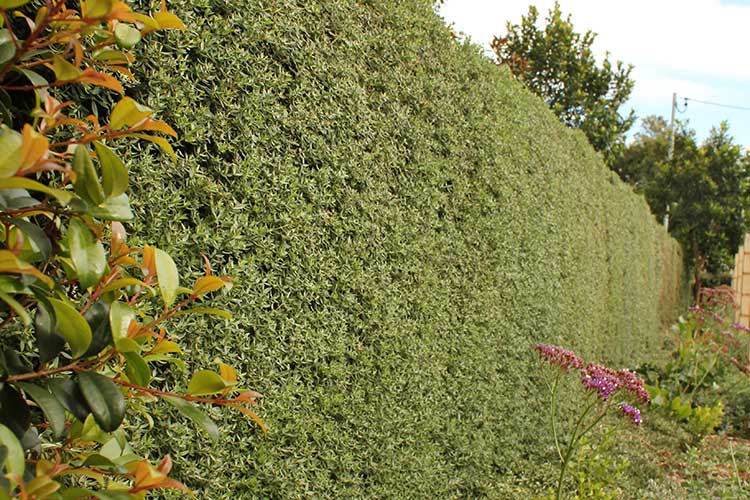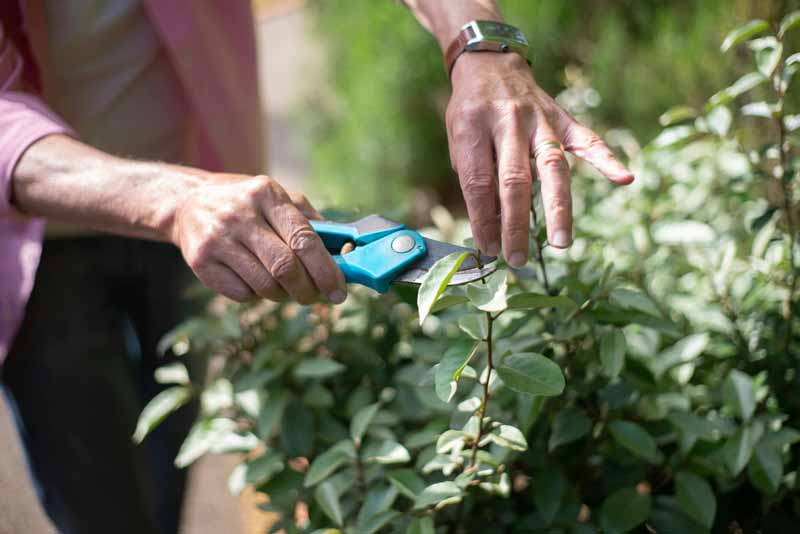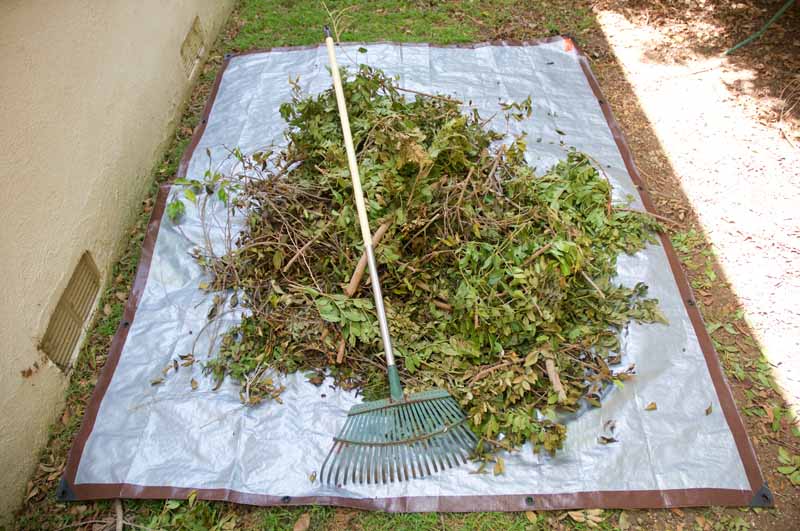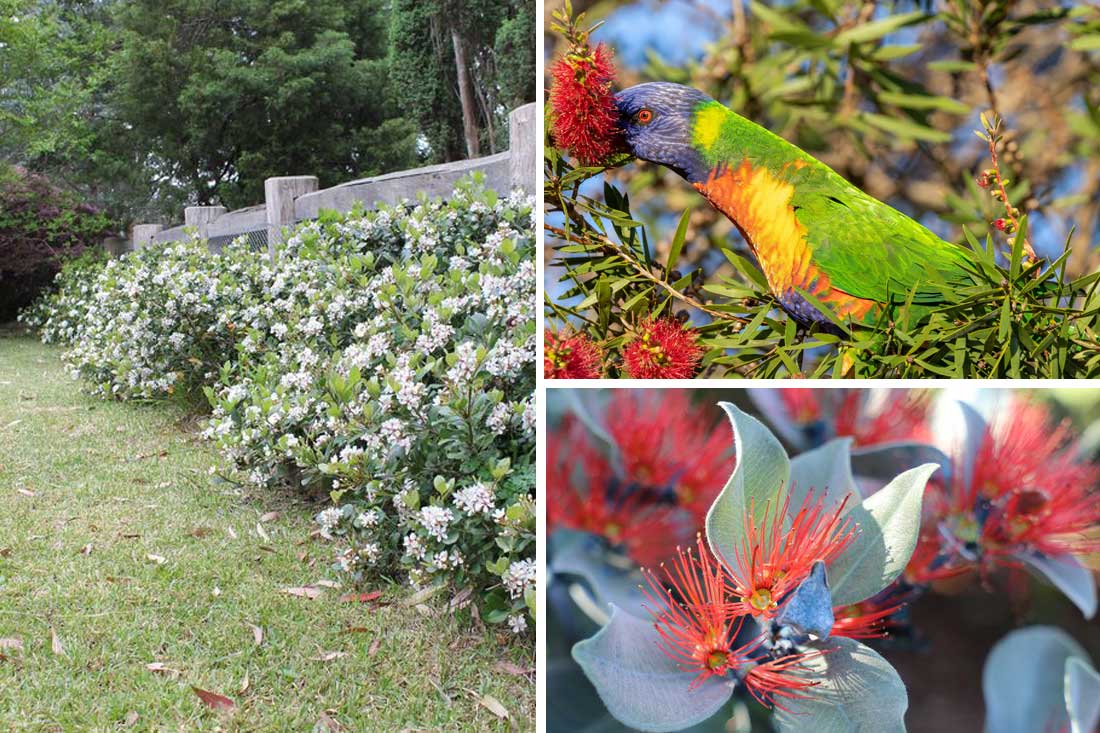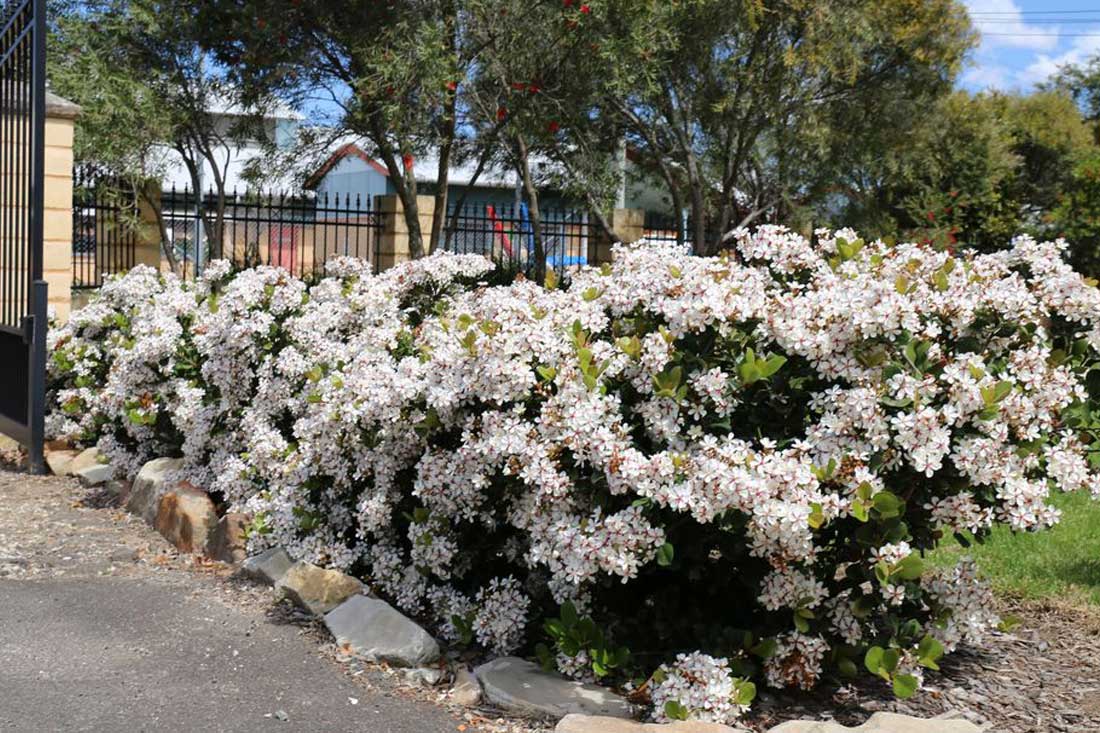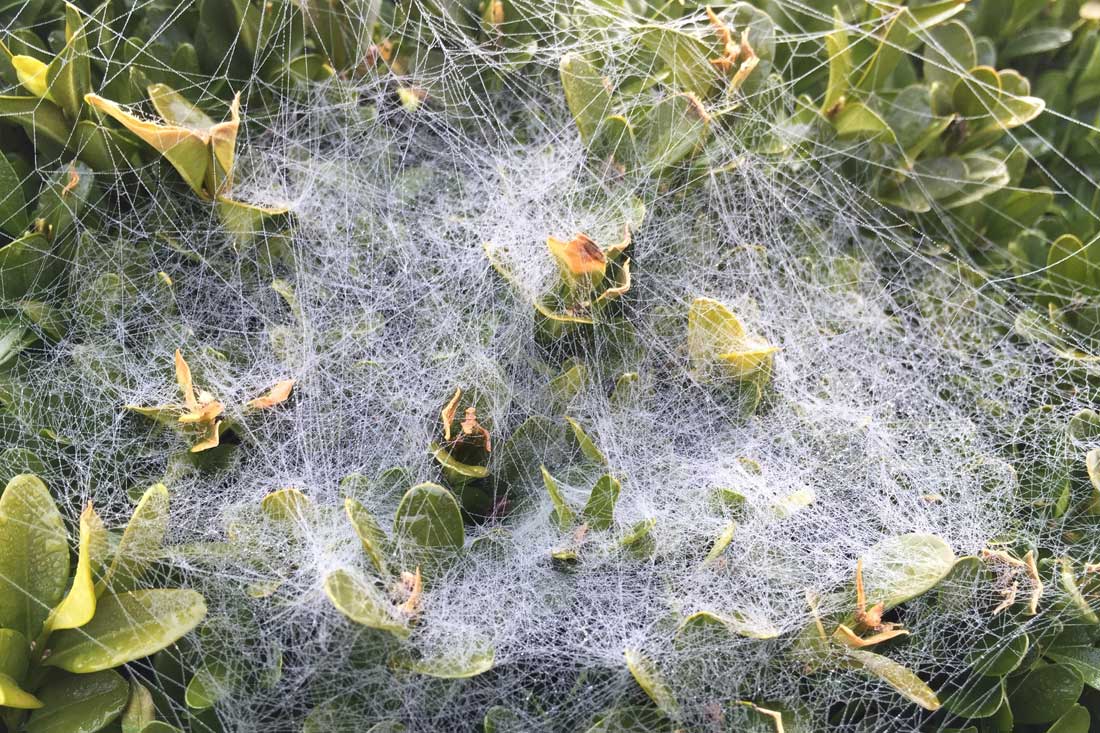Running a hedge trimmer over a row of shrubs might make them look much neater and may even look like a hedge, but for a great hedge, a little extra care will go a long way. Here are a few tips to help you create and maintain a great hedge:
Planning
A well planned hedge will give better results for less work as the hedge matures. Choosing the most appropriate plant for your garden design and hedge requirements will be very important. By choosing a hedge plant with an approximate mature height similar to the desired hedge height will mean significantly less trimming is required to maintain the size and shape of your hedge. You will also need to consider the region you live in, not all hedging plants are suited for all regions and climates, make sure you choose the right plants for your hedge. Hereyou will find many articles that will help you choose the right plant for your hedge. Also remember the right plant for the right region, using a plant that does not grow well in your region could leave with a hedge like the one below.
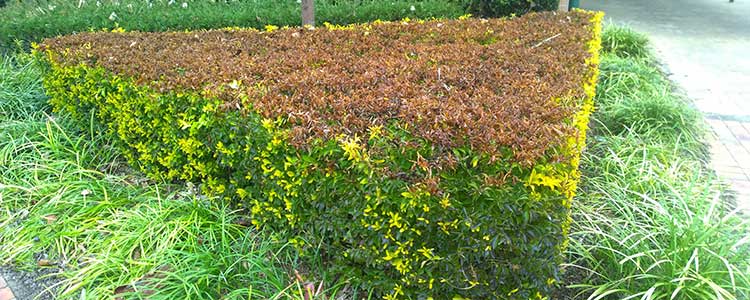
Once you have made your plant choice, correct spacing and therefore how many plants you will need is part of creating a great hedge. Information to help you space your hedge plants appropriately can be found here.
When to Start Pruning
Start pruning a young hedge before it has reached full size. Pruning hedge plants helps them put on dense new growth. A good hedge is dense all over, not just along the top. To best achieve this it is ideal to give small plants a regular light trim (possibly only 2cm removed each time), even before they have grown together to form a hedge. This ensures that the young plant is putting on dense growth all over the plant, instead of just growing taller and potentially getting leggy.
How Often to Prune
Once your hedge has reached the desired height pruning is required to keep it to the size and shape you want it to be. How often this needs to be done will depend on how fast your hedge is growing which in turn will be influenced by climate, growing conditions and type of plant selected. A formal hedge will require pruning more often than an informal hedge. Some hedges in warm climates may need pruning monthly throughout the hot wet growing seasons, in cooler climates the same plant may only need to be pruned 3 or 4 times a year in order to maintain a tight hedge. To determine how often to prune, be guided by how much you need to prune off the hedge each time, ensuring the hedge is pruned frequently enough to prevent the hedge from becoming overgrown.
How Much to Prune
All hedges will prefer small amounts removed more often as opposed to a major prune. As a rule of thumb, you should never be pruning back into bare wood unless restoring an old hedge. For most hedges about 5-10cm of growth is all that should be pruned each time. For a very tight formal hedge, this may be even less.
Getting the Shape Right
Most hedges are pruned into a roughly rectangular shape of varying heights. Once the hedge is the size and shape you like it, a small regular prune will mean you can follow the existing line of the hedge to keep the shape straight. If the hedge needs a bit of extra pruning to get the shape back you can set up a string line to help keep the line you are pruning to straight. If you are not confident get a professional in to cut the hedge in to shape then you will find maintaining the shape will be much easier.
When cutting the vertical edge of a hedge try to ensure the bottom of the hedge is a little wider than the top. It can often work out that the opposite occurs without intent. The lower sections of the hedge will tend to get less sunlight than the top and this can cause thinner leaf coverage on lower sections. By cutting the bottom of the hedge just a little wider than the top it assists the lower branches get enough sun to stay leafy.
Cut the vertical side of a hedge in an upwards sweep. A downwards sweep will push branches down into the hedge and can result in an uneven cut.
Tidying up prunings
After cutting the hedge brush the top with your hand or a gentle grass rake to remove any leaves from the top of the hedge. If leaves are allowed to die on top of the hedge they not only look unsightly they also block sunlight to the new leaves below and can cause bare patches.
Small amounts of prunings can be safely pushed under the hedge to decompose in situ and act as mulch. Large amounts of prunings should be added to the compost rather than left in deep piles under the hedge and especially should not be allowed to build up against the plant stems. Never use diseased prunings as mulch or compost.
Fertilising
All hedges will need fertilising at some stage. In general the more often it is cut, and the more leaf material that is trimmed off it each time, the higher will its fertiliser needs be. Most hedges will be happy to be fertilised twice a year (spring and late summer) with a complete organic fertiliser. Fertilisers high in nitrogen, such as lawn fertilisers or pelletised manure fertilisers are ideal for hedges which are trimmed often, as they will help promote new leaf growth. Native hedges should be fertilised with pelletised manure or fertiliser which is suitable for use on natives.
Avoid over fertilising a hedge as this will result in fast but potentially weak growth meaning more pruning is required and can cause greater problems with pests.
Managing Pests and Diseases
Hedges, like all garden plants can be attacked by pests and diseases. Unlike the rest of the garden, if one plant in the hedge succumbs to pest or disease problems, the entire hedge is likely to be affected. Replacing one dead plant within an established hedge is usually unsuccessful, or may take many years to fill the gap, therefore it is a good idea to manage pests and diseases in hedges before they can take hold and damage the hedge. You will find more information about pests and diseases of hedges here.
*Article published by Kate Wall

